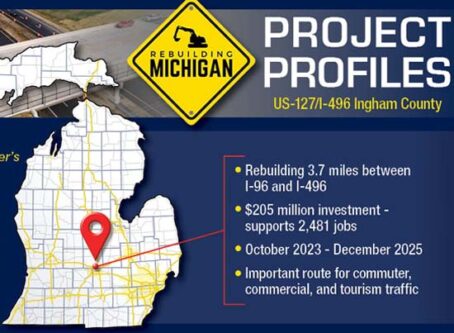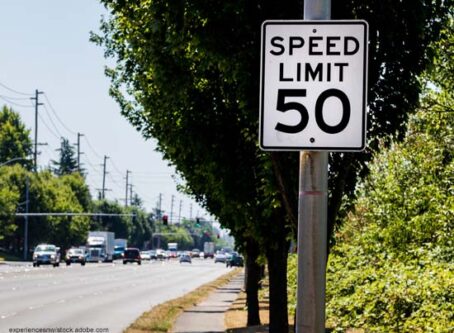States continue to adopt rule changes to accommodate truck platoons
Providing authority to test driver-assistive truck platooning technology on highways continues to advance through statehouses across the country. The concept uses a lead truck to control the speed and braking of following trucks.
Advocates say truck platooning will save fuel because of reduced aerodynamic drag, lessen traffic congestion, and improve highway safety. Some supporters acknowledge it will work best on relatively flat, divided highways outside of populated areas.
Critics question how automated vehicles and traditional vehicles will interact on roadways. Others doubt whether widespread use of the technology is realistic.
In addition, the U.S. Department of Transportation’s John A. Volpe National Transportation Systems Center reports that Federal Motor Carrier Safety Regulations are likely to get in the way of automated technology.
During the past three years at least a dozen states have taken action to permit testing of autonomous trucks. The rule changes often require amendments to large vehicle following distance rules.
The first state to take action was Utah. It acted this year to approve a follow-up bill to exempt connected trucks from the state’s two-second rule for safe following distance.
The most recent state to act on the issue is Louisiana. Gov. John Bel Edwards has signed into law a bill to revise state law that covers the minimum requirements for large vehicle following distances.
Louisiana law states that “a driver shall not follow another vehicle more closely than is reasonable and prudent.” Specific to trucking, the rule defines the distance as within 400 feet on a highway.
Previously HB308, the new law permits platooning trucks to travel within the restricted distance between vehicles.
Addressing concerns on the House floor about what would happen if a vehicle merges in front of a platoon vehicle, Rep. Kenny Havard, R-St. Francisville, assured legislators the system is set up to disengage – much like cruise control – if the driver taps on the brake.
The rule change does not apply to platoons operating on a two-lane highway.
It takes effect on Jan. 1, 2019.
In Michigan, a bill halfway through the statehouse would revise the state’s following-too-closely rule.
Michigan law already requires that platooning trucks accommodate other vehicles attempting to change lanes or exit the highway. Specifically, affected trucks must “allow reasonable access” for vehicles to maneuver around them.
House lawmakers voted 64-44 to advance a bill that would retain the provision, but include an amendment to specify that affected trucks traveling on a highway in a platoon would be exempt from the state’s minimum distance following rule.
“The Michigan vehicle code must stay current so that Michigan roadways can continue to embrace these new technologies,” stated Rep. Michael Webber, R-Rochester Hills. “With the advancement of autonomous vehicles on Michigan roads, we need to update the law to reflect these changes.”
He added that the change will enhance the transportation of goods in a safe manner.
Critics said they could not support legislation that lacks research on the safety of self-driving technology.
HB5749 awaits further consideration in the Senate Transportation Committee.
A bill nearing passage in the Pennsylvania statehouse would authorize truck platooning in the state. The bill would also permit the state DOT and the Pennsylvania Turnpike to use driverless trucks in roadway work zones.
Sponsored by Rep. Greg Rothman, R-Cumberland, HB1958 would permit affected vehicles to operate in violation of the state’s following distance rule for large vehicles. The rule would apply for up to three vehicles while working on limited access highways or interstates.
“The commonwealth and the country hasn’t had an opportunity to save lives like this since the advent of seat belts,” testified Rothman at a recent Senate Transportation Committee hearing.
Tim Scanlon, director of traffic engineering and operations for the Pennsylvania Turnpike Commission, said that while improving roadways in the state with additional traffic lanes and better facilities may provide current customers with a better experience, “it will not be enough to attract the future of commercial haulers. Truck platooning offers to be one of the most beneficial, and game-changing innovations for the future of the transportation industry.”
The approval of this bill allows for the Commonwealth to continue its leadership efforts within the industry by providing an avenue for the commercial industry leaders to use Pennsylvania as a test bed for platooning technology.”
Rothman said the technology would also provide a significant benefit for road crews, and help reduce injuries from rear-end collisions from motorists who strike the back of attenuator trucks in affected areas.
The trucks serve as a buffer vehicle between the work area and approaching traffic. The attenuator is intended to absorb the impact of an errant vehicle.
“I think we are seeing more and more that automated vehicles will play an expanded role in the construction industry,” Rothman previously stated. “I want Pennsylvania to be a leader in this area by ensuring we have a law in place to address this issue.”
The Senate Transportation Committee voted to advance the bill for further consideration. House lawmakers acted earlier this year to approve a nearly identical version of the bill by unanimous consent. If the Senate approves the bill it would head back to the House for approval of changes before it could head to the governor’s desk.
In Ohio, a bill in the House Transportation and Public Safety would permit the use of truck platoons on the state’s roadways.
HB699 would require affected vehicles to have a licensed CDL holder in the seat.
States to enact rule changes this year to permit platooning trucks on roadways include Alabama, Indiana, Kentucky, Mississippi, Oregon, Utah and Wisconsin. The changes in each state focus on granting exemptions to connected trucks from following distances rules for large vehicles.
The Kentucky rule stands out because it includes a requirement for affected vehicles to also display a marking to warn other drivers and law enforcement that the vehicle is part of a platoon. Carriers would also be required to submit for approval a platooning plan to the State Police.









